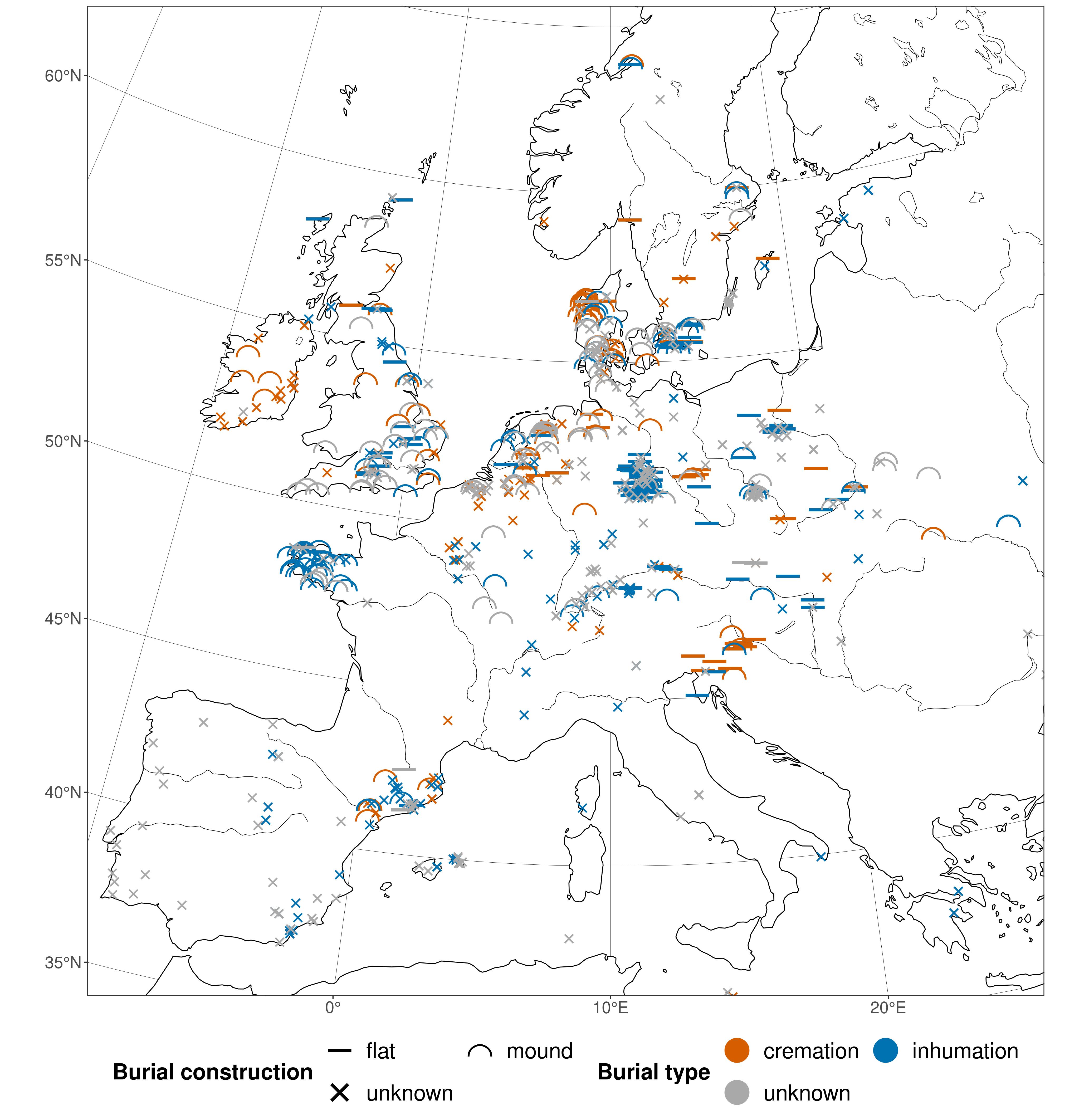A computational Cultural Transmission model of Bronze age burial rites in Central, Northern and North-western Europe
This paper was prepared to present some results of my now submitted master thesis at the CCS2018 conference in Thessaloniki, Greece. The relevant session Evolution of Cultural Complexity III by Sergi Valverde and Simon Carrignon takes place on 27/09/2018.
I've written my thesis at Kiel University. It was supervised by PD Dr. Oliver Nakoinz and Dr. Martin Hinz. The correction process is still ongoing when this paper is presented.
European Bronze age archaeology traditionally focusses on two major dimensions to categorise burials - although there's an immense variability of attendant phenomena within this spectrum: Flat graves versus burial mounds and cremation versus inhumation. These traits are an indispensable ingredient for common narratives of sociocultural interaction in the Bronze age.
This complex system of ideological affiliation and exchange can be described in the terms of Cultural Evolution theory. Burial rites are extraordinary cultural traits: Following Dunnels [1] distinction between function and style based on relevance for selection, they can be handled as neutral variants. As demonstrated by Neiman [2], drift and intergroup transmission as opposed to natural selection should therefore be the decisive processes for their expansion. On the other hand funerals touch upon personal loss and profound religious beliefs: They are not short-lived fashion and most probably well interlinked with other - many archaeologically inaccessible - traits.
This paper will present the results of my currently ongoing master thesis. To study the diffusion of burial rites, I employ the dataset RADON-B [3] which contains more then two thousand Bronze age 14C dates of graves from Central, Northern and North-western Europe. Based on this information I construct regional time series that document how rituals change. For a better understanding of the real-world phenomena I implement a computational model in R and C++. It simulates the expansion of mutually exclusive ideas in an artificial population graph and provides an environment to explore the effects of parameters like group size or the degree of intergroup idea transmission.
[1] Dunnell, Robert C., ‘Style and Function: A Fundamental Dichotomy’, American Antiquity, 43 (1978), 192–202 https://doi.org/10.2307/279244
[2] Neiman, Fraser D., ‘Stylistic Variation in Evolutionary Perspective: Inferences from Decorative Diversity and Interassemblage Distance in Illinois Woodland Ceramic Assemblages’, American Antiquity, 60 (1995), 7–36 https://doi.org/10.2307/282074
[3] Kneisel, Jutta, Martin Hinz, and Christoph Rinne, ‘Radon-B’, 2013 http://radon-b.ufg.uni-kiel.de.
